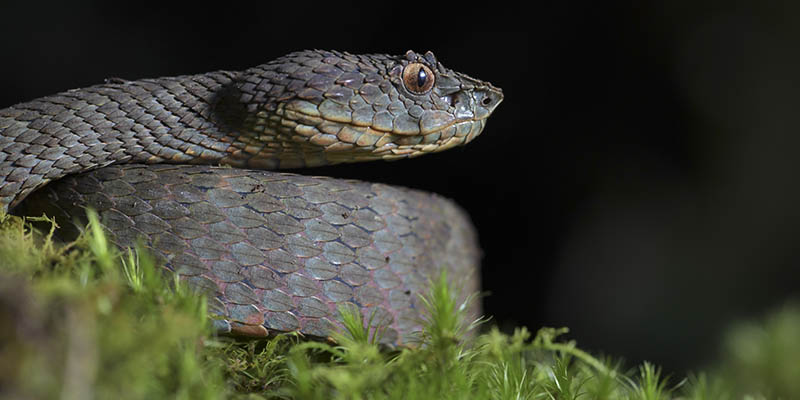Herping is a branch of specialized tourism that consists of observing Amphibians and Reptiles in their wild state. In Colombia, these biological groups have been stigmatized and rejected for many years due to cultural traditions and superstitions that have generated a completely different image of reality. Today, many of these species are facing threats according to the IUCN, one of their main threats is the destruction of their natural habitats and illegal trafficking.
The amphibians and reptiles belong to a group of animals called Herpes, and the study of them is called Herpetology, which comes from the Greek word Herpeton (crawling animal, which crawls). The word Herping refers to a way of observing and photographing this biological group in its natural state.
The Amphibians and Reptiles are a group of animals that have managed to establish themselves in ecosystems so diverse that they go from seas to jungles, deserts and the wastelands. In recent years there has been an increase in interest in researching and knowing more about their ecology due to being biological indicators of conserved ecosystems.
Colombia has one of the richest natural heritages on the planet. The diversity of the country is the product of biophysical aspects that lead to a number of habitats, which have favored the diversity of Herpetofauna in the country. So far the country has around 800 species of amphibians and around 537 species of reptiles (SIB 2017). Some of the most interesting and rare species are: the Golden Dart Frog (Phyllobates terribilis) cataloged as the most poisonous vertebrate in the world; the Collarejo Lizard (Stenocercus lache) a species that dominates the heights of the Sierra Nevada del Cocuy because it manages to move itself up to 4000 meters above sea level; the Blue Gorgon Lizard (Anolis gorgonae), a critically endangered species with a restricted location on only one island in the Colombian Pacific, and the 12 different species of the poison dart frog of the genus Andinobates, characterized by being located in cloud forests and tropical rainforests, which are also threatened by anthropogenic pressure.
In the eastern plains, the Crocodile of the Orinoco (Crocodylus intermedius), common to the Orinoco basin and considered one of the largest predators in Latin America as well as one of the largest crocodile species in the world. In the Amazon, we can find a snake that for many years has served as an inspiration for legends and films: the Green Anaconda (Eunectes murinus) is common to the rivers of the South American tropics. It is the heaviest snake in the world and the second longest. In the lowlands, we have the lizard pollero (Tupinambis teguixin) a species of large lizard from the Teiidae family. It reaches a total length of 1.5 m. Apart from all of these there are also a large number of poisonous frogs, glass frogs and lizards that are of great interest to photographers and naturalists.


